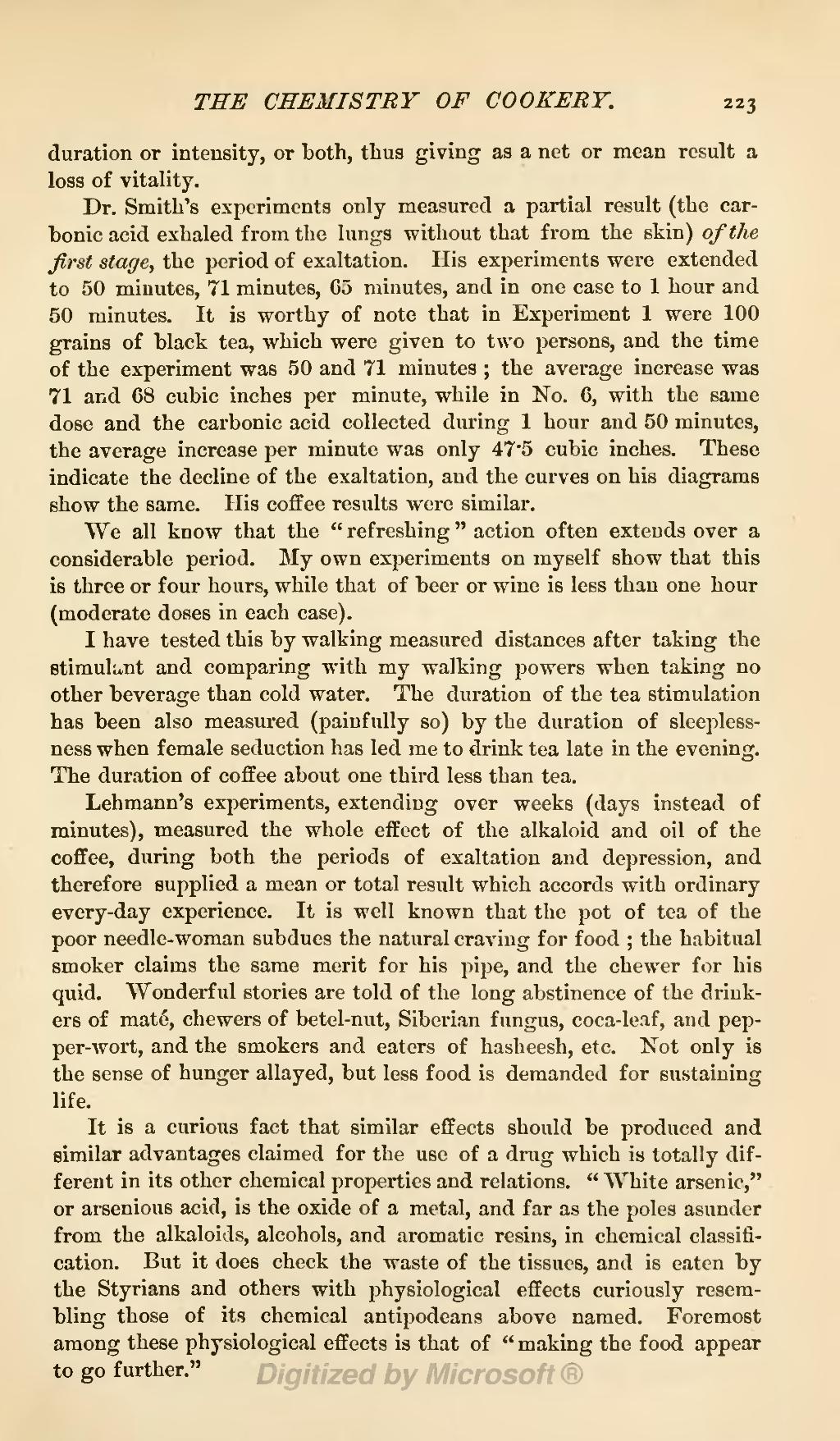duration or intensity, or both, thus giving as a net or mean result a loss of vitality.
Dr. Smith's experiments only measured a partial result (the carbonic acid exhaled from the lungs without that from the skin) of the first stage, the period of exaltation. His experiments were extended to 50 minutes, 71 minutes, 65 minutes, and in one case to 1 hour and 50 minutes. It is worthy of note that in Experiment 1 were 100 grains of black tea, which were given to two persons, and the time of the experiment was 50 and 71 minutes; the average increase was 71 and 68 cubic inches per minute, while in No. 6, with the same dose and the carbonic acid collected during 1 hour and 50 minutes, the average increase per minute was only 47•5 cubic inches. These indicate the decline of the exaltation, and the curves on his diagrams show the same. His coffee results were similar.
We all know that the "refreshing" action often extends over a considerable period. My own experiments on myself show that this is three or four hours, while that of beer or wine is less than one hour (moderate doses in each case).
I have tested this by walking measured distances after taking the stimulunt and comparing with my walking powers when taking no other beverage than cold water. The duration of the tea stimulation has been also measured (painfully so) by the duration of sleeplessness when female seduction has led me to drink tea late in the evening. The duration of coffee about one third less than tea.
Lehmann's experiments, extending over weeks (days instead of minutes), measured the whole effect of the alkaloid and oil of the coffee, during both the periods of exaltation and depression, and therefore supplied a mean or total result which accords with ordinary every-day experience. It is well known that the pot of tea of the poor needle-woman subdues the natural craving for food; the habitual smoker claims the same merit for his pipe, and the chewer for his quid. Wonderful stories are told of the long abstinence of the drinkers of maté, chewers of betel-nut, Siberian fungus, coca-leaf, and pepper-wort, and the smokers and eaters of hasheesh, etc. Not only is the sense of hunger allayed, but less food is demanded for sustaining life.
It is a curious fact that similar effects should be produced and similar advantages claimed for the use of a drug which is totally different in its other chemical properties and relations. "White arsenic," or arsenious acid, is the oxide of a metal, and far as the poles asunder from the alkaloids, alcohols, and aromatic resins, in chemical classification. But it does check the waste of the tissues, and is eaten by the Styrians and others with physiological effects curiously resembling those of its chemical antipodeans above named. Foremost among these physiological effects is that of "making the food appear to go further."
